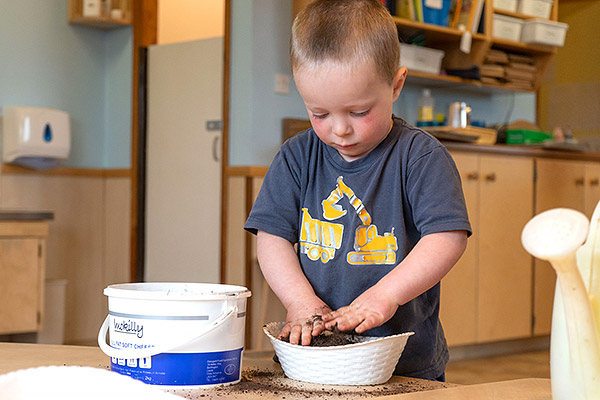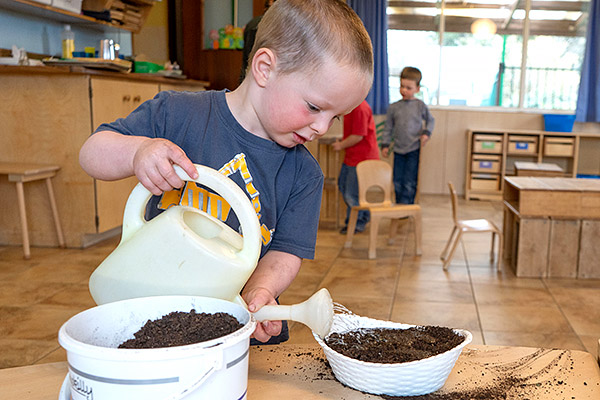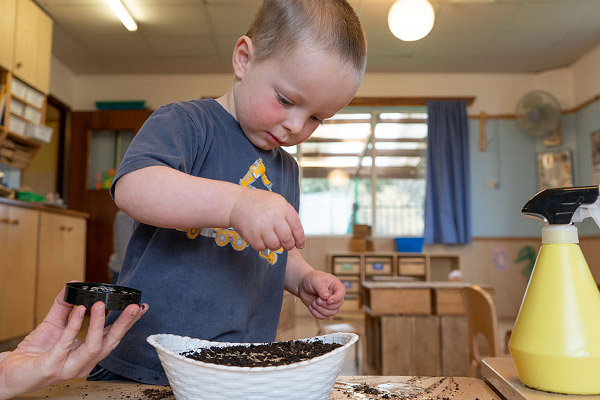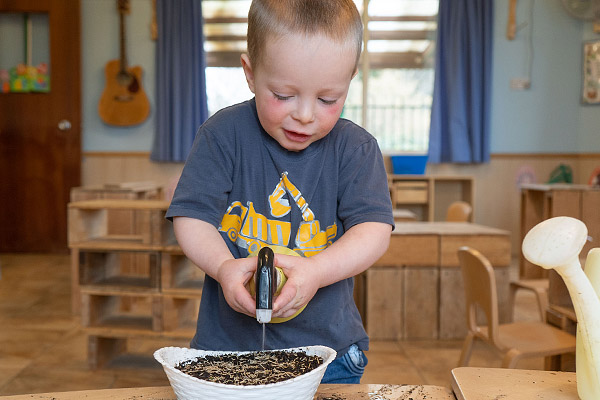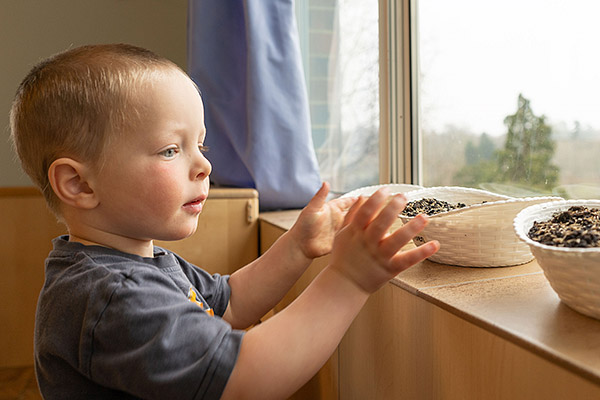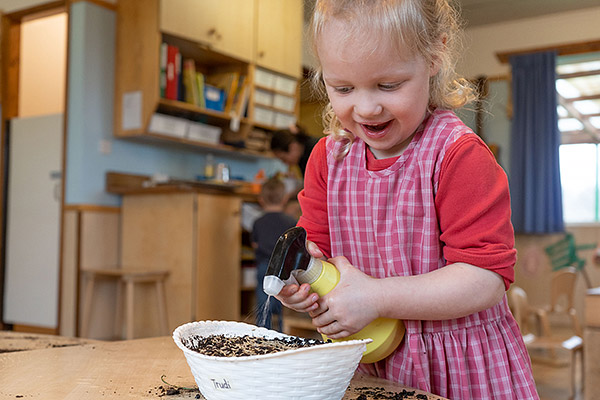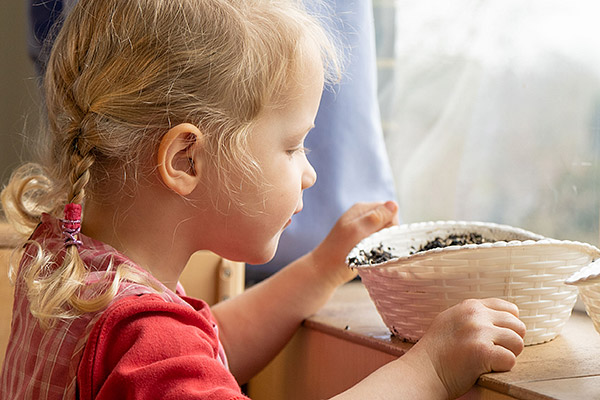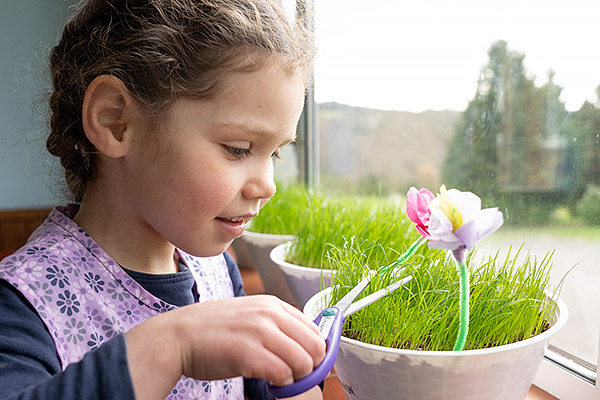Growing grass from seeds
Plant, water and watch
| March 2021Spring is clearly on the way, and there’s no better time to introduce the concept of planting seeds and the growth of plants. Growing grass is one of the most basic projects that demonstrates this and will be easy for young children to carry out with minimal adult support. Look at the dry grass seed first with your group of children. How will these tiny dry grains grow into the lush green grass that covers the ground in your outdoor area? Taking a step back and thinking about this is mind-boggling even for adults, and is a great way to inspire children’s interest in nature.
Once you have grown grass in containers, you can take it a step further and create small grass gardens with the children by adding a few finishing touches. The grass gardens can be taken home as a gift for Easter or simply a spring surprise!
Materials needed:
Potting soil and grass seed (available from your local garden centre), plastic containers approximately 6–12 cm deep such as supermarket food packaging, watering can, spray bottle filled with water
Note: An alternative to potting soil is earth collected from your outdoor area; children enjoy the digging process as well. Just be sure that the earth at the top is loose and soft, or spread a thin layer of potting soil at the top. One year my group of children collected mole hills, and this proved very effective as the earth was already loosened and soft!
Instructions:
- Fill plastic containers with potting soil or earth.
- Water the soil well with a watering can (use a rose so that the water sprinkles).
- Sprinkle grass seed over the entire surface of the soil.
- Spray gently with the spray bottle.
- Set the containers on a sunny window sill. If you don’t have a window sill wide enough to hold the containers, place them on a table-top positioned close enough to a window to catch the sun. Containers may need to be rotated throughout the growth process to get even sun exposure.
- Spray the grass seeds daily, ensuring that the soil gets thoroughly moistened.
- Watch the seeds for the first growth which will be a reddish-brown shoot coming out of the seed, turning green within a day or two. An additional project would be to make a chart or calendar to track the seeds’ growth, e.g. when the seeds were planted, how many days it took for the seeds to start sprouting, when the first green showed, etc.
- When the grass has grown fairly tall, you can have fun with the children giving the grass a “hair cut”, using scissors to trim it. This will make the grass grow more thickly and evenly.
Once the grass has grown, you can leave it as it is, or consider completing the garden with a few finishing touches made or collected by the children, e.g. painted stones, a pebble pathway, paper flowers on wire stalks stuck into the earth, felt rabbits, or anything within the spring theme.
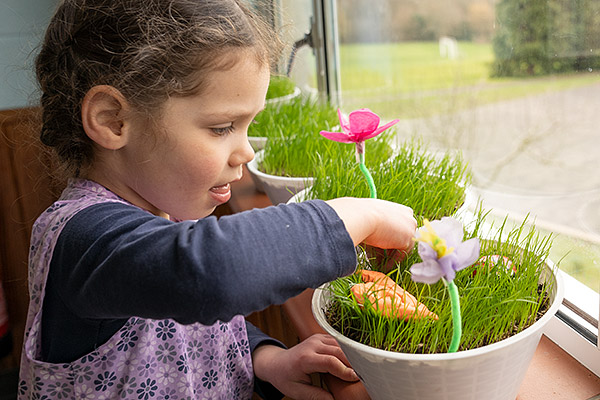
Spring grass gardens make a beautiful and refreshing gift to bring home or can be used as a centre-piece for your nursery table. Now your children will newly appreciate the miracle of the growth of a simple grass blade as they run and play on lawns and meadows.

